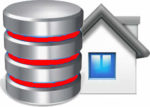From A to XOR – Relational Database Terms and Concepts Made Clear
From web applications to job tracking systems or accounting
packages, you don’t have to go far to find a relational database. But when it
comes to understanding the relational terms in most documentation, many people
quickly find themselves neck deep in jargon soup–or worse–wading through
hundreds of pages of beginner books to find a good explanation.
So who better to give us a precise explanation of the hundreds of terms used in
relational theory than relational theory pioneer C. J. Date? After all, he wrote
“An Introduction to Database Systems” which has sold close to three quarters of
a million copies across its eight editions, not to mention that it is used by
several hundred colleges and universities. Unfortunately you can’t get a
personal line to Dr. Date but he has given us the next best thing.
Date’s latest book, “The Relational Database Dictionary” (O’Reilly, US $14.99)
contains more than six hundred entries dealing with issues, terms, and concepts
involved in, or arising from use of, the relational model of data. Many of the
entries include not only definitions but also one or more illustrative examples.
Dr. Date says, “I’ve done my best to make the definitions as clear, precise, and
accurate as possible; they’re based on my own best understanding of the
material, an understanding I’ve been honing gradually over some thirty-five
years of involvement in this field.”
Whether you’re using Oracle, DB2, SQL Server, MySQL, or PostgreSQL, “The
Relational Database Dictionary” will prevent confusion about the precise meaning
of database-related terms (e.g., attribute, 3NF, one-to-many correspondence,
predicate, repeating group, join dependency), helping to ensure the success of
your database projects. The dictionary has been carefully reviewed for clarity,
accuracy, and completeness to make certain it’s an authoritative and
comprehensive quick reference for any reader’s database programming needs.
The one-of-a-kind dictionary provides a single, compact source where DBAs,
database designers, DBMS implementers, application developers, and database
professors and students can find the accurate definitions they need on a daily basis–information that isn’t readily available anywhere else. If you’re working with or learning about relational databases, you’ll find this pocket-sized guide to be essential.

